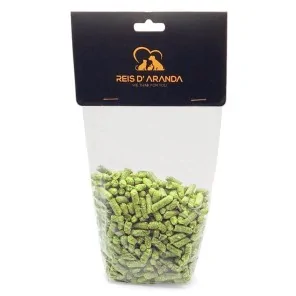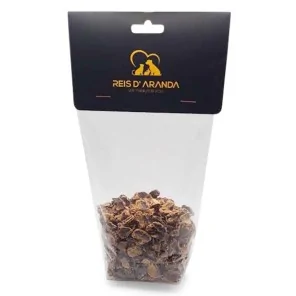The Tornjak originated from genetically homogeneous, almost extinct, indigenous shepherd dogs. These dogs have...
MY RABBIT IS GOING TO BECOME A MOTHER, WHAT SHOULD I DO?
INTRODUCTION
It is not the first or the second time that we see in social media groups focused on pet rabbits that a rabbit has given birth without the owner's knowledge (either because he has several together without neutering or sexing, or because he has been given the adult rabbit as a gift and has found the surprise). Then begins a wave of comments, advice (well-intentioned but wrong) and reproaches; many of these unwanted rabbits die and, in most cases, due to the owner's negligence and inexperience.
In this article we will try to give the best professional (non-industrial) advice and indications for receiving a litter of rabbits.
GESTATION IN RABBITS AND CONFIRMATION OF PREGNANCY
Rabbits are fertile from the age of three months but the fact that they can become pregnant at this age does not mean that they have to breed. The minimum age for mating depends on the breed or size, but as a general rule in the case of dwarf rabbits the first mating should be done at least at 5 months of age.
Sexing is very important and this is one of the reasons why we must know the sex of our animals very well if we want to give them a companion or have several in a group, because if we do not have them properly sexed or castrated we can encounter various problems and one of them is the same: irresponsible reproduction.
If the mating is intentional, it must always be supervised and, as soon as the male has mounted her and ejaculated correctly, we will have to separate them and not bring them together again until the pregnancy confirmation date arrives. The duration of mating in rabbits depends on several things, among them how receptive the female is and whether or not the male has any impediment when it comes to mating: excess hair on the back of the female, that he is smaller and does not reach correctly, that he has some type of malformation in his penis (curvature), that the female is not at her peak of receptivity. ... even if the male does not have high testosterone levels; if all goes well, the mating usually lasts between one and two minutes, the male will fall sideways or backwards (this indicates that ejaculation has been successful) and in some cases, due to this same excitement, the male will squeal and then kick the ground.
Unlike dogs or humans, rabbits have what is called "induced ovulation" (which also occurs in cats) and means that they have to mate in order to release the eggs which will then be fertilised. Fertilisation of the eggs occurs between 12 and 17 hours after mating.
When will we know if our doe is pregnant? We will know between the 12th and 14th day, when the foetuses are palpable through the abdominal cavity, feeling like a string of grapes; palpation is a manual technique of pregnancy confirmation that requires a lot of practice and delicacy in order not to damage the foetuses or cause an abortion, so a private individual (an owner who is not a breeder nor studying to be one) is preferable not to do it, as many times the foetuses are confused with other organs or even with the faeces of the intestine. In this case it is better to go to a vet and have an ultrasound scan done to find out if the doe is really pregnant or not (around day 12-14 the foetal skeletons and amniotic sacs are fully visible on ultrasound scanners).
Pregnancy in rabbits lasts between 29 and 32 days, so it is important to first note the date of the mating and then confirm it, so that we can prepare ourselves for the expected dates. If our doe is pregnant we will give her the same amount of food as usual except for the last week of gestation when we will double the amount of food available, why is this done? To prevent the rabbits from getting too big (which can cause problems at parturition) and the doe getting too fat (which can also cause problems).
WHERE SHOULD THE RABBITS BE BORN?
Something I have seen many times (especially in people who keep their rabbits loose in the house or in a field/yard) is that people allow the rabbits to be born anywhere: under the bed, in a cupboard, in a hole in the garden floor.... But, then they find that they die of cold, are attacked by vermin, drown because of rain or are killed by ants.
This happens because rabbits, like any other domestic living creature, must be born in a controlled place for their well-being.
No, they should not be born in the back of the cupboard, or under your bed, or in the middle of the garden; it doesn't matter if you keep your rabbit outside all day or if you are "anti-cage": their safety comes first.
When there are five days to the birth, we must prepare a large cage so that the mother and the offspring are controlled in every way, this cage must be in a quiet room, without draughts or extreme temperatures (if it is a hot room and we cannot control this we will have to buy an air conditioning machine with which to maintain a constant daytime temperature of about 22-23 degrees centigrade), without humidity and where pests (terrestrial or flying insects or rodents) cannot get in. We will put a good quality absorbent substrate such as paper pellets at the base of the cage and we will offer good quantities of soft hay or cereal straw for them to make their nest, ceramic feeders that they cannot easily overturn and throw over the young and large 1-litre drinkers that will always be full.
The materials used for the nest or cage should always be washable, the best being hard plastic, so that we can disinfect with products without perfume or bleach without any problems (the first cleaning should be done when the rabbits are one week old).
WHAT PROBLEMS CAN I ENCOUNTER DURING OR AFTER BIRTH?
We can find several problems that are typical in all mammals, as follows:
-ABORTION: This occurs when the pregnancy is interrupted and the pregnancy is too advanced for the body to reabsorb the foetus. It can occur due to physical problems of the animal (malnutrition, problems in the reproductive system, heat stroke...), psychological (excessive stress) or by intoxication (chemical products, application of medicines not suitable for pregnant rabbits, abortive food such as parsley...). Most rabbits expel the foetuses and veterinary interventions are not necessary.
-FETUS RESORPTION: Occurs when a pregnancy is interrupted by any of the options mentioned above or because the pregnancy is not viable, in these cases the pregnancy is practically not advanced (before 12 days) and the body absorbs the foetus without leaving a trace.
-DYSTOCIA (POOR BIRTH): On occasions the gazapos are too big to pass correctly through the birth canal or the birth canal of the doe is too narrow, so the offspring can get stuck and come out with difficulty, dying in the process and presenting an excessively long size (up to a span long in some cases), in the gazapos that are born well but have suffered when being born we can observe that they have a bruised nose or face due to the lack of oxygen and the pressure, but they recover in one or two days. On very few occasions the female is unable to expel that particular gazapo, so it gets stuck and we are the ones who have to get it out very carefully, pulling at the rhythm of the contractions (if we are abrupt we can split the foetus); if we do not know how to do this, the best thing to do is to go to the vet so that he can administer oxytocin (the hormone that produces contractions in females) or, in the worst case scenario, perform an emergency caesarean section.
-DEATH OF THE FEMALE: On very rare occasions it can happen that the female dies in labour or within hours of giving birth, generally because there is massive haemorrhaging or because a gazapo has become stuck and, from the effort and stress, the mother suffers a cardiac arrest.
-DEATH OF THE GAZAPOS (BABY BUNNY): It is not unusual for a gazapo to die during the birth because it cannot stand the stress of the moment, in this case some females eat them to "protect" the other pups or we will remove them directly with a plastic bag. That the whole litter dies because the mother is inexperienced, does not have maternal instinct or the birth does not go well is common, very unpleasant and frustrating, but it can happen.
-THE MOTHER DOES NOT PRODUCE MILK OR DOES NOT PRODUCE ENOUGH MILK: In this case the best thing to do is to go to the vet to apply the appropriate treatment so that the levels of prolactin (the hormone that produces the mother's milk together with oxytocin) rise, it is very important as the colostrum (present in the first shots of mother's milk) is essential for the immune system of the pups to be good. If nothing works we will have to give them syringes of formula milk (with which the chances of the rabbits surviving will be minimal) or, if we have another rabbit with rabbits of the same age (or two days older at the most) put them in the nest and pray that she will accept them and raise them as her own.
-CANNIBAL MOTHER: Some rabbits may have a genetic tendency to cannibalism. In these cases it does not matter how correct everything is, that she has plenty of food and water (very important) or that she is in perfect health, if we see her attacking the offspring or mutilating them we will have to remove them and not breed with her again.
-INEXPERT MOTHER: They are usually first time rabbits that do not know very well what to do at the moment of birth, so they do not make a nest, do not pull out their hair or pay attention to their young; normally, in these cases, the gazapos die of hypothermia because they do not have a good prepared place (nest) where to take shelter.
THE IMPORTANCE OF RESPONSIBLE BREEDING
As we can see many things can happen when we breed our doe, so breeding should always be done from a responsible point of view, anticipating possible events and not letting ourselves be carried away by the impulse of "wanting to live the experience" (this happens a lot with children and parents who want to fulfil their desires without looking at anything else). When dealing with lives we must know very well what to do and let ourselves be guided by those who know more than us (breeders and vets), as well as being very clear that we will have to take care of these pups properly for a minimum period of 45 days, when they can wean and go to their new home (before that it is counterproductive).
Breeding is not bad, it helps to keep species and breeds in our lives, but breeding badly, without knowledge, without the means to do so and without wanting to listen to those who know more than us is irresponsible.
CONCLUSION
Breeding is a wonderful experience but it can bring certain unpleasant consequences that we must be aware of, accept and be ready for in case any of the above-mentioned possibilities occur.
Leave a comment
Log in to post comments
















